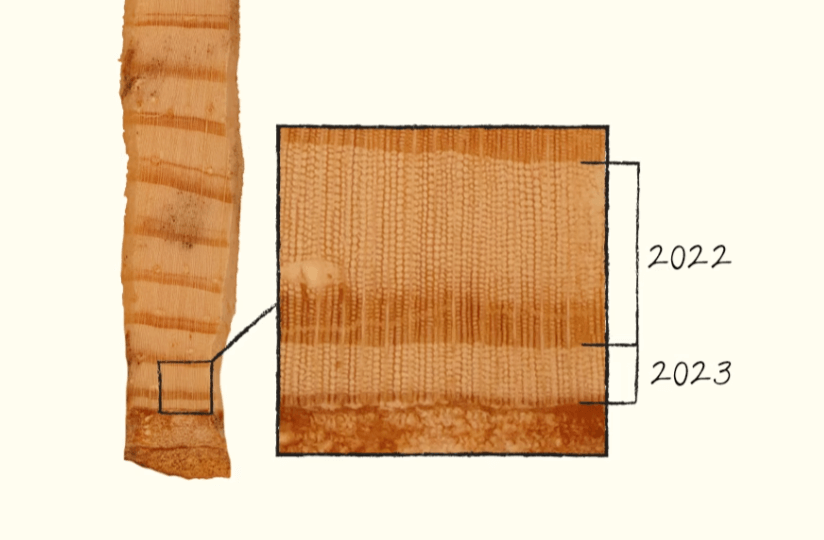Deep in the Sonoran Desert, high on a mountain’s wind-swept peak, there lives a tree known as Bigelow 224.
With its stout orange trunk and long, graceful needles, the tree looks like any other ponderosa pine growing on Mount Bigelow. But a sliver of its wood, taken amid Earth’s warmest year on record, shows that this tree has a story to tell — and a warning to offer.
For centuries, Bigelow 224 stretched sunward while history unfolded below. The tree witnessed the rise of industrialization and the devastation of Native communities. It watched Arizona become the nation’s 48th state in 1912. Generations lived and died, wars were lost and won, humans walked on the moon and transformed Earth. Still, the tree has survived.
But then came 2023, the hottest year that humanity — and Bigelow 224 — had ever seen. All around the planet, temperature records fell like dominoes. Up on Mount Bigelow, an unrelenting heat wave made the air feel like an oven and sucked moisture from the thin soil.
The toll of those unprecedented conditions was etched into Bigelow 224’s trunk. Scorched by relentless heat and parched by a delayed monsoon, it appeared to stop growing midway through the season. The ring for this year is barely a dozen cells wide.
It is a silent distress signal sent by one of Earth’s most enduring organisms. A warning written in wood.
































